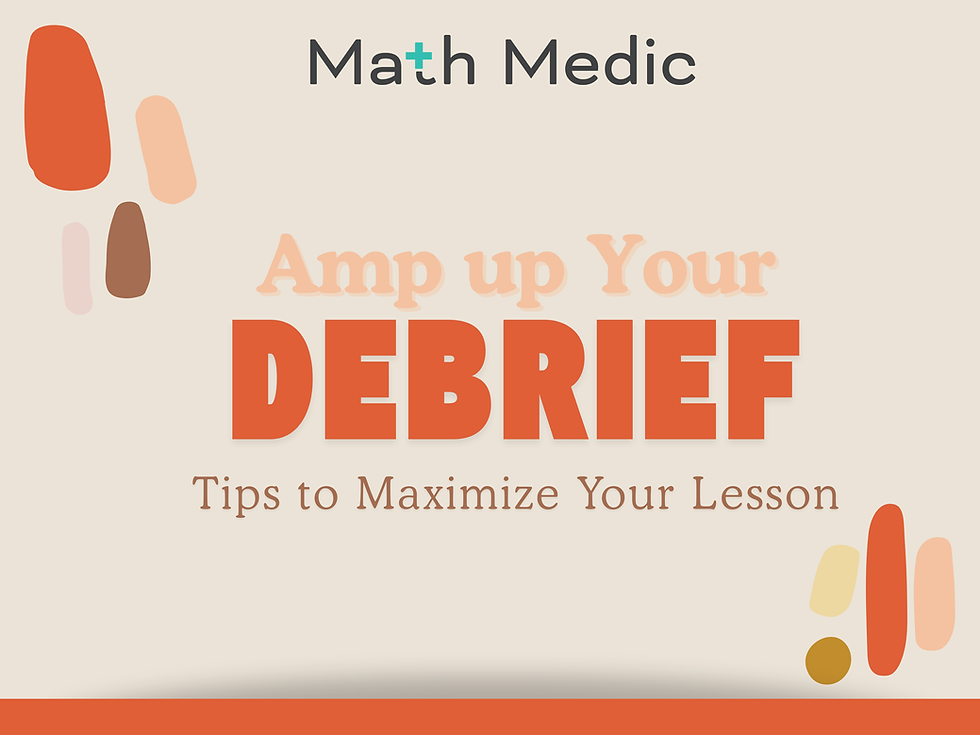What is Rigor?
- Sarah Stecher

- Feb 4, 2022
- 4 min read
Updated: May 22
“Rigor” and “rigorous curriculum” are some of those buzzwords in education that we have subscribed to with gusto. We’re AP Calc teachers after all. Rigor is the name of the game. But have we ever paused to truly think about what those phrases mean? And why does it matter?
Merriam Webster defines rigor as “harsh inflexibility in opinion, temper, or judgment; the quality of being unyielding; strict precision”.
While we might not agree with the severity of this language when it relates to teaching math, we do tend to hold rigor in high esteem, equating it with thinking logically, providing sound arguments, and being precise–all of which are important components of the mathematical discipline.
But I wonder if we’ve also added a lot to what that word means–and by doing so maybe alienated some students from taking our course or even painted a false picture of what math truly is.
Is rigor about disciplined thinking so students can avoid errors and eradicate misconceptions?
Is rigor about a curriculum that is comprehensive? About making sure we cover everything?
And the crux of the matter:
Does a demand for rigor crowd out the equally mathematical practices of using good intuition, revising one’s thinking, and the slow but illuminating process of grappling with new ideas? Does an insistence on formality and precision right from the start rob students of opportunities to engage in authentic mathematical discovery?
World-renowned mathematician, MacArthur Fellow, and Fields Medal recipient Terence Tao wrote a blog post titled: “There’s more to mathematics than rigour and proofs” In it he says,
“The point of rigour is not to destroy all intuition; instead, it should be used to destroy bad intuition while clarifying and elevating good intuition. It is only with a combination of both rigorous formalism and good intuition that one can tackle complex mathematical problems; one needs the former to correctly deal with the fine details, and the latter to correctly deal with the big picture.”
So how do we hold students accountable for ambitious learning outcomes while still leaving room for the inefficient acts of exploration and sense-making? It turns out that it’s not just about what we teach, and how we teach it, but when we teach it.
It’s all about the “when”
In my teaching experience, I’ve found students make tremendous gains when they experience first, and we formalize later. Precise mathematical vocabulary and generalized strategies are layered onto what students are already thinking and talking about. This consolidation phase is critical to the lesson but with intentional teacher moves, we can slowly dial up the formality, instead of cranking up the heat all at once. At least a part of this formalization happens by the end of the class period, but other parts may take until the end of the week, or even sometimes until the end of the unit.
The goal is not to ditch the formality and precision, but to reconsider when it happens. By starting with the big picture concept instead of the fine details we give students a foundation on which the later details can land (like when we wait to use formal Riemann sum notation until after students understand the importance of an infinite Riemann sum).
What rigor is not
“Rigorous” is not the same thing as “comprehensive”, and certainly not the same thing as “exhaustive.” As math teachers, it’s in our nature to want to be as helpful as we can to our students. Oftentimes we think this means preparing students by covering every type of question they might encounter–every special case they might run into–so they never reach a place where they’re stuck or unsure. We want students to get high AP scores after all! But often this well-intentioned mindset shifts the focus of our classrooms to answer getting and rote practice. Rigor is not about the quantity of practice but the quality of it.
The teacher’s goal should not be to expose students to every kind of problem that could be asked with every single possible variation, but to provide opportunities to deepen understanding of content through varied and thoughtful questions. Instead of memorizing the problem types, students should be figuring out what is important about a concept, because that idea will be seen over and over again in homework and assessment questions, even if it’s asked in a new way.
To me, a rigorous curriculum should hold students to high expectations and challenge their critical thinking skills. It should work to build conceptual understanding and position students as capable of making important mathematical contributions. This means embracing the early stages of “fuzzy” or “intuitive” thinking, as Tao calls it, and building bridges to the desired learning outcomes.
A rigor inventory
Take some time to think about your own classroom and reflect on the following questions:
How would I define rigor?
What parts of my class do I desire to be rigorous? The materials? The expectations? The vocabulary? The thinking? Something else?
Where in my class do I leave room for informal, “fuzzy” thinking and how might students benefit from this?



